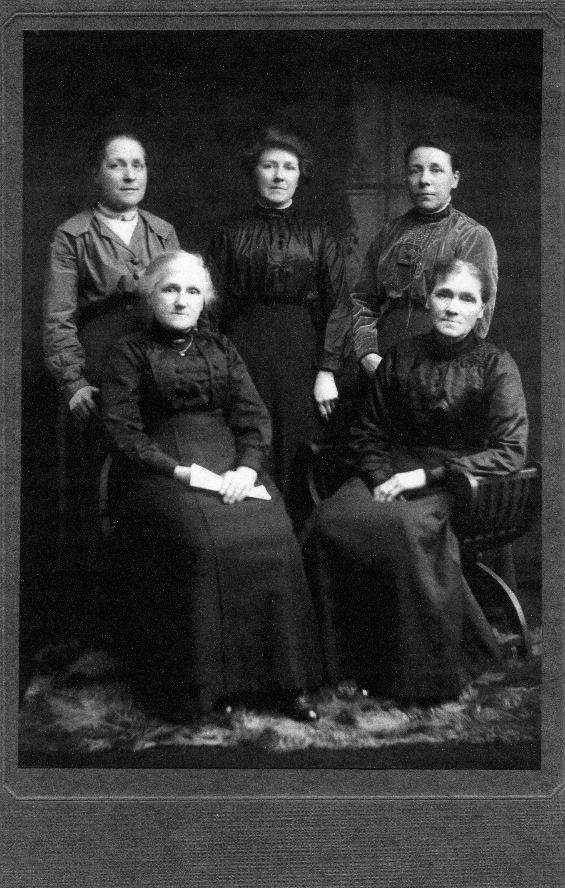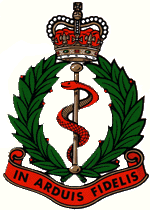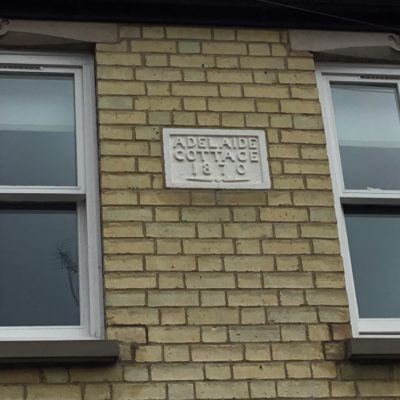Search by topic
- archaeology
- Building of Local Interest
- charity
- church
- crime
- dressmaker
- fire
- Great Eastern Railway
- Listed building
- Mapping Relief
- medieval
- oral history
- poverty
- Public House
- Rattee & Kett
- Religious House
- Roman
- scholar
- school
- Then and Now
- tudor
- women
- work
- world war one
- world war two
Search by text
4 Ainsworth Street
4 Ainsworth Street
Number 4 is one of a terrace of three houses on the east side of Ainsworth Street.
1881 census
Elizabeth Wakefield, head, married, 39, b. Sutton St Edmunds, Lincolnshire
Annie Manning, daughter, 19, sewing machinist, b. Cambridge
Lydia Manning, daughter, 14, domestic servant, b. Cambridge
Hannah Gibbs, head, unmarried 30, cook, b. Bartlow nr Linton, Cambridgeshire
Alice M Gibbs, daughter, 1, b. Cambridge
Sarah Ann Hewit, head, married, 63, b. Balsham nr Linton, Cambridgeshire
1891 census
James Doggett, head, 44, general labourer, b. Chesterton, Cambridgeshire
Emma Doggett, wife, 46, b. East Hatley, Bedfordshire
Arthur George Doggett, son, 18, shoeing smith’s apprentice, b. Chesterton
Ada Doggett, daughter, 16, b. Cambridge
Charles William Doggett, son, 12, scholar, b. Cambridge
Sarah Jane Doggett, daughter, 10, scholar, b. Cambridge
Frederick K H Doggett, son, 8, scholar, b. Cambridge
Florence M Doggett, daughter, 6, scholar, b. Cambridge
Eliza E Doggett, daughter, 4, scholar, b. Cambridge
Maud B Doggett, daughter, 2, scholar, b. Cambridge
Benjamin Langley, lodger, 46, maltster, b. Chesterton, Cambridgeshire
Emma Doggett died on 1 October 1898 and is buried in St Andrew’s Churchyard in Chesterton. Her son George Arthur, memorialised on her gravestone, ‘died of enteric fever at Ladysmith, South Africa Jan 5 1900, aged 27’. He was a shoeing smith, Sergeant, in the 5th (Royal Irish) Lancers and died during the Boer War. It goes on to say ‘also James Doggett died Sept 27th 1935 aged 87 years’.
Charles joined the 3rd (King’s Own) Hussars in 1897 and served with them for 16 years, including time in India and serving in the Boer War 1899–1902. During World War I he was with the 2nd Suffolk Regiment.
Frederick joined the Suffolk Regiment in November 1899. In 1901 he was stationed on Alderney.
1901 census
Sidney J Melton, head, 35, carpenter & joiner, b. Rougham, Suffolk
Sarah E Melton, wife, 32, b. Waterbeach, Cambridgeshire
Gertrude Melton, daughter, 11, b. Cambridge
Albert S Melton, son, 10, b. Cambridge
Elsie K Melton, daughter, 5, b. Cambridge
Ada W Melton, daughter, 2, b. Cambridge
The Melton family lived at 15 Ainsworth Street in 1891. On the 1911 Census they were living at 48 Gwydir Street.
Sidney and Sarah Melton are buried in Mill Road Cemetery with two of their sons who were born after they moved to Gwydir Street.
1911 census
James Mayle Phillips, head, 35, locomotive engine driver, GER, b. Cambridge
Jessie Louisa Phillips, wife, 32, b. Cambridge
Vera Louisa Phillips, daughter, 8, b. Cambridge
Stanley Thames Phillips, son, 2, b. Cambridge
Thomas Phillips, father, widower, 62, railway time keeper, b. Longstanton, Cambridgeshire
Ada Gwendoline Stevenson, cousin, single, 19, school teacher, b. Cambridge
James Mayle Phillips and Jessie Louise Franklin were married in 1901 and had two children.

Jessie Phillips (nee Franklin) and her sisters. Jessie is standing at the back on the right. Used with permission of her descendants.
1921 census
James Mayle Phillips, head, 45, railway engine driver, GER, b. Cambridge
Jessie Louise Phillips, wife, 42, home duties, b. Cambridge
Vera Jessie Phillips, daughter, 18, builder’s clerk, b. Cambridge
Stanley Thomas James Phillips, son, 12, b. Cambridge
Thomas Phillips, Father, 73, retired time keeper, Great Eastern Railway, b. Long Stanton, Cambridgeshire
Vera Phillips was working as a clerk for builders Kerridge & Sons on Sturton Street.
On Thursday 11 November 1926, James Phillips was driving an express train from Liverpool Street. When the train reached Broxbourne Station, ‘He had got down from the footplate and was attending to his engine when another train coming from the opposite direction knocked him down, killing him instantly’ (Sheffield Daily Telegraph, 12 Nov 1926). He is buried in Mill Road Cemetery.
Stanley Phillips lived at no. 4 until he married Olive Whitfield in 1937 and they moved to Fallowfield.
1939 register
Jessie L Phillips, b. 13 Feb 1879, pensioner, unpaid domestic duties
Vera L Phillips, b. 4 Feb 1903, builder’s clerk, first aid post
Jessie died in 1944, still living at no 4, and is buried at St Clement’s Church. Vera appears on electoral rolls and in Kelly’s Directory until 1967, still living at 4 Ainsworth Street. She died in 1983.
Sources: UK census records (1881 to 1921), General Register Office birth, marriage and death indexes (1837 onwards), the 1939 England and Wales Register, British Army Service Records 1914-1920, British Army Pension Records 1914–1920, AngloBoerWar.com, British Trade Union Membership Registers, England & Wales, National Probate Calendar (Index of Wills and Administrations), 1858-1995, Kelly’s Directory of Cambridgeshire (1967), Sheffield Daily Telegraph 12 November 1926 and Cambridgeshire, England, Electoral Registers, Burgess Rolls and Poll Books (1914–1966), Mill Road Cemetery,
Contribute
Do you have any information about the people or places in this article? If so, then please let us know using the Contact page or by emailing capturingcambridge@
License
This work is licensed under CC BY-NC-SA 4.0








